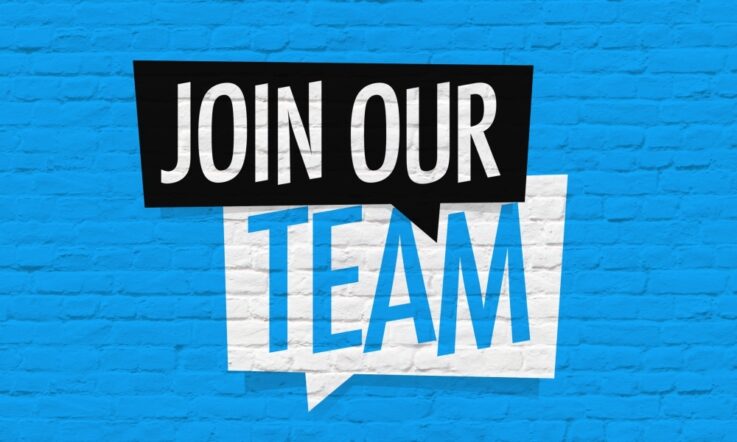Thanks for tuning in to this episode of Teacher Staffroom, where we catch you up on the latest evidence, insight, and action in education. I'm Dominique Russell.
We know that helping students to develop their skills in the general capabilities is essential for preparing them to succeed in a modern society. There are many examples in the Teacher archive of schools giving students the opportunity to be critical and creative thinkers, and in this edition of Teacher Staffroom, I’d like to share some recent examples with you.
In today’s episode I’m going to get you up to speed on some of these examples, and also some more of my highlights. And, like all episodes of Teacher Staffroom, I’ll be posing some questions throughout the podcast, so feel free to pause the audio as you go, gather some colleagues and discuss together how these stories might be relevant to your school context. Let's jump in.
Earlier this month, we heard from our regular columnist, Director for Education and Skills at the OECD Andreas Schleicher. In his piece titled ‘Where the “extracurricular” becomes the curriculum’, Andreas shared the details of a promising program in Colombia that sees educators work as mentors and coaches.
It’s called the sacúdete strategy, and Andreas says ‘it shows to others what the future of school could look like when we put learners at the centre and make the “extracurricular” the curriculum.’
In the article, he describes the three phases of the strategy. The first is that teachers work as coaches and mentors to help young people. The next phase involves building the knowledge, skills, attitudes and values that will help these young people realise their dreams, and the third is all about working with local economic or social entrepreneurs to bring these dreams to fruition.
It sounds like a fascinating program, and if you’d like to read more about it, follow the link in the transcript of this podcast, or click on the Columnists tab on the homepage of our website, teachermagazine.com.
I’m excited to share with you this next story that was written by Mark Weston, the Director of Character Education and Leadership at Aquinas College in Western Australia. In the article, he outlined the school’s student leadership program which he helped develop.
It was revamped in order to increase participation and to strengthen student voice. Here’s what Mark had to say about the aims:
We wanted this new system to provide leadership experiences accessible to all students in the College and provide opportunities for them to develop the skills of good leadership – collaboration, creativity, critical thinking and communication. This skill set we see as vital to the formation of good people in the 21st Century.
Mark goes on to describe the six steps of the leadership program, which begins in Year 10 and goes up to Year 12. The stages are: introduction and application; participation and contribution; conduct and behaviour; demonstrating leadership; review and reflection; and, the team leadership challenge.
This new program, he says, has ‘the added benefit of upskilling students in the character traits of good leaders, as well as providing authentic opportunities to practice leadership. It has also cultivated a strong student voice that has brought to fruition many new student-led initiatives. In 2021 there were just over 50 projects instigated and run by the student councils.’
So, thinking about this topic, I have some questions for you to think about on your own, or with your colleagues. Thinking about your own school, what opportunities are there for students to develop their leadership skills? Do you have a student council, or similar group? Is this open to all students? What role does student voice play in the planning, the implementation and the development of programs and events in your school and your wider community?
Remember, we always love to hear about the current initiatives at your school that are having an impact on student outcomes. If you have a story you’d like to share with us, you can email us at any time at teachereditorial@acer.org.
Next I’d like to take you to a wonderful story from Canberra, where teacher librarian Mali Jorm described the book acquisition process they have in place at Melba Copeland Secondary School. Students can write their requests in a request book, and when it arrives in the library, a sticker is added to the book to show which student requested it. Here’s what Mali had to say about the success of the program over the years:
Within the first four years of the introduction of the program, student borrowing rates increased by 342 per cent. Student-selected books now account for over 80 per cent of book purchases. Teacher Librarians use the remaining 20 per cent to showcase authors, genres and topics that complement and extend the student-led collection development selections.
One of our readers, Jae, left a comment on this article to share how they run a similar program at their school. They said this:
I have been a Teacher Librarian in NSW for 19 years and I have always encouraged my students to request books they would like to read. The student who requested the book is always first to borrow it. Students have more time than I do to check out what’s new and interesting. I always check reviews on the book and suitability for my collection and I rarely have to deny a request.
So, considering these programs, have a think about the library in your school or classroom. How do you decide which books to purchase? Are students involved in this decision-making? How do you know you’re stocking titles that students are interested in reading?
Another lovely story to do with reading is the most recent episode in our podcast series, Episode 74 of The Research Files. We spoke with Professor Emerita Rosemary Johnston from the University of Technology Sydney to unpack some of the research on the benefits and joys of reading aloud, how it impacts our learning, and how we can continue to support reading aloud at school and at home.
It’s a wide-ranging conversation, but this one clip I’d like to highlight with you really stood out to me. Here’s what Rosemary had to say:
One of the lovely things about reading aloud is that, for example, you can convey your feeling, your emotion, your understanding, or an interpretation of it. You know? You can say this sentence in this way, which is a bit timid, or you can say it in this way which is aggressive, because the words are fairly innocuous. You know, there’s so many spots for reader interpretation. And it’s good for students to learn that, to understand that the written word can be interpreted in so many different ways. And sometimes I even say to a primary school group, ‘How would you say that sentence if you’re feeling scared?’ and they love to do that. ‘How would you say it if you wanted to scare people?’ You know, that’s another one. ‘How would you say it if you didn’t understand what it meant exactly?’ You know, you can play with all sorts of different scenarios.
So, here’s a question to think about. As a teacher, consider the opportunities that exist to read aloud to students in your lessons. How can you use your voice to bring a text to life in different ways to engage students in the content?
Now, coming back to our earlier discussion on the topic of future schooling, there was a Policy Brief that came out recently on education in the metaverse. The brief was released by the Brookings Institution and it looks at how research and best practice in education can be successfully transferred to the metaverse to ensure we make the most of new teaching and learning opportunities.
In the article, we look at what the metaverse is, the best principles for learning, and the promises and the pitfalls of the metaverse. So, there’s certainly a lot to wrap your head around and plenty of questions to think about as an educator after reading this piece. If you’d like to read more, I’ll place a link to this story in the transcript of this podcast, along with all the other stories we’ve spoken about, which you can find under the podcast tab at our website, teachermagazine.com.
The last story I’d like to highlight with you in this episode is all about a school’s STEAM program in Western Australia. At St Hilda’s Anglican School for Girls, one way they encourage students to develop their skills in critical and creative thinking is through entering the Young ICT Explorers competition, which gives students the opportunity to solve real-world problems using technology.
A team of students won second place last year with a device they invented to help those with a hearing impairment learn to play the drums. Head of Extension in the Junior School, Karen Donnelly, shared with us how they have cultivated a culture where students are empowered to think about real-world problems that may be affecting their community. She had this to say:
‘We go from solving problems for characters and stories, and then they might solve problems for themselves – they might look at a problem like litter in the school. So, those simple, everyday problems. And then at the Year 6 end, they're really homing in on big problems and very personalised problems. We’ve done [the Young ICT Explorers competition] for quite a few years and we’re blown away by the things they come up with. [As a school] we are really looking at that innovation, creativity and entrepreneurial spirit as really part of where we're going, because we know that students need more than academic results going into the future. There's a lot more we're going to need in the future and that's what we're doing, trying to future-proof students with this kind of approach.’
So, we’ll finish this episode off with one last question for you to think about. As a teacher, what kinds of real-world problems are you incorporating into your lessons? Is there a mix of small, everyday problems, and bigger issues faced by your local community or wider society? Which real-world problems have you found to be the most engaging for your students?
That's all for this episode, and now you’re all caught up on the latest evidence, insight and action. Links to all the content and the resources I’ve mentioned will be in the transcript of this podcast available at our website, teachermagazine.com.
Subscribe to our podcast channel wherever you get your podcasts from, so you can be notified of any new episodes as soon as they land. If you want to keep listening now, you can access the 200+ episodes already in our archive. And, while you’re there, we’d love if you could rate and review us.



